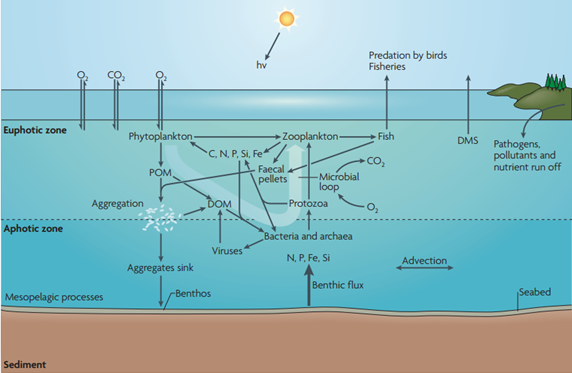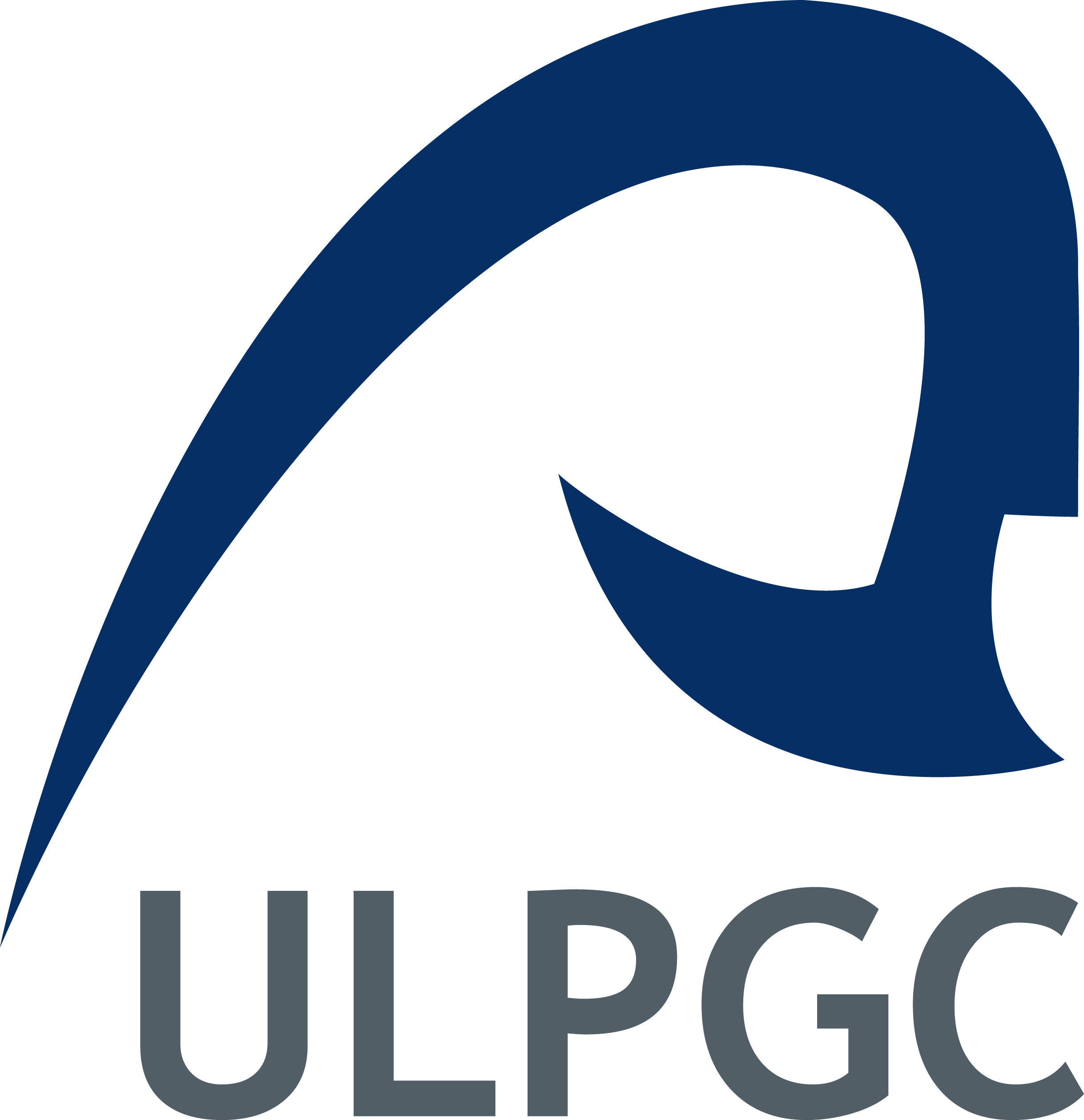Ph.D. Program in Oceanography and Global Change at the Canary Islands, Spain
Phytoplankton, the ensemble of microorganisms that form the base of marine trophic webs in the sunlit ocean, requires inorganic nutrients in order to carry out primary production, that is, the synthesis of organic compounds from CO2 through photosynthesis. Part of the organic matter synthesised by primary producers can enter the dissolved fraction (DOM) due to processes such as exudation by phytoplankton itself, grazing by predators and viral lysis, while another fraction is exported from the surface to the deep ocean mainly in the form of aggregates, faecal pellets, etc. DOM can readily be used by the prokaryotic community (formed by bacteria and archaea) which remineralise the organic matter into its original constituents, releasing CO2 and inorganic nutrients to the environment, a process known as the microbial loop. While in surface waters the remineralised nutrients are quickly taken up by primary producers again, the remineralisation occurring in deep waters away from the sun light necessary for phytoplankton results in the accumulation of inorganic nutrients. These waters with high inorganic nutrient concentrations can eventually reach the surface mediated by a range of physical processes, influencing the biogeochemical cycles of the water column and providing the necessary ingredients for new cycles of primary production. Consequently, regions where upwelling of nutrient-rich waters regularly occurs are hotspots of primary production, with a disproportionately high contribution to that of the global ocean. As such, studying the diversity, activity and metabolic potential of prokaryotic communities in these regions is of paramount importance to understand how they impact the recycling of organic matter.
Figura extraída de Azam and Malfatti (2007).




